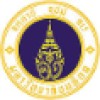
Study of Efficacy and Safety of Ofatumumab in Relapsing Multiple Sclerosis (RMS) Patients in China...
Relapsing Multiple SclerosisThe purpose of this study is to evaluate the efficacy and safety of ofatumumab s.c. in adult participants with relapsing multiple sclerosis (RMS) in China.

Safety and Efficacy of Zanubrutinib in the Treatment of Antiphospholipid Syndrome With Secondary...
Antiphospholipid SyndromeThrombocytopenia1 moreTo evaluate the safety and efficacy of zanubrutinib in the treatment of antiphospholipid syndrome with secondary thrombocytopenia in 10 patients.

Efficacy and Safety of Low-Dose Colchicine on Surrogate Markers of Cardiovascular Events in People...
HIV InfectionsInflammatory Markers1 moreIn a double-blind, randomized controlled trial, we assigned PLWH receiving ART without a history of cardiovascular events to received colchicine 0.6 mg once daily or placebo. The primary endpoint was the mean difference of hs-CRP, IL-6, and IL-1 Ra levels at three and six months. The secondary endpoint was to access safety outcomes.

B Cell Maturation Antigen Targeted CAR-T Cells in Treatment With Relapsed and Refractory Multiple...
Multiple MyelomaRelapse Multiple Myeloma1 moreFor the treatment of relapsed and refractory MM, the Chinese Guidelines for the Diagnosis and Treatment of Multiple Myeloma pointed out that relapsed MM is highly heterogeneous, and individualized evaluation of relapsed patients is required to determine the treatment time. Patients with biochemical recurrence with only elevated M protein do not need immediate treatment, only regular follow-up visits. For patients with CRAB manifestations or rapid biochemical relapse, treatment needs to be initiated immediately. Patients who relapse within 6 months can switch to a drug combination with other mechanisms of action; patients who relapse within 6 to 12 months should first switch to a drug combination with other mechanisms of action, or they can be retreated with the original drug; 12 months Patients with the above recurrence can use the original regimen to re-induction therapy, or switch to a drug regimen with other mechanisms of action. Bortezomib, lenalidomide, and thalidomide are currently the key drugs for the treatment of relapsed MM in China. Patients with suitable conditions should undergo autologous hematopoietic stem cell transplantation, while allogeneic hematopoietic stem cell transplantation is rarely used because of higher transplant-related mortality.

Clinical Study of B001 Injection in Subjects With Neuromyelitis Optic Spectrum Disorder (NMOSD)...
NMO Spectrum DisorderThe objectives of this phase Ib study are to evaluate the efficacy, safety, pharmacokinetics, pharmacodynamics and immunogenic profiles of B001 in subjects with aquaporin-4 antibody (AQP4-IgG) positive NMOSD.

Meibomian Gland Probing in the Sub-Acute Phase of Patients With Stevens-Johnson Syndrome/Toxic Epidermal...
Stevens-Johnson SyndromeToxic Epidermal Necrolyses4 moreThe investigators' aim is to study the effects of mechanical expression of meibomian glands on eyelid disease, ocular surface health in the subacute phase of SJS/TEN. The primary outcome is to use meibomian gland imaging to assess the health and caliber of the meibomian glands of both lower eyelids, between the treated and non-treated eyes before and after the intervention. Monitoring of outcomes will be measured by comparing the results of meibography at the initial visit and at the 6-month follow-up. The secondary outcome assessed will be patient symptoms. The Ocular Surface Disease Index survey will be administered before each treatment and patients will be asked to differentiate their symptoms between the two eyes, both before and after the intervention. The investigators hypothesize that mechanical expression of meibomian glands within the first 6 months of SJS/TEN onset will significantly improve ocular surface disease and symptoms in those patients.

Maintenance Belantamab Mafodotin (Blenrep®) After B-cell Maturation Antigen-Directed Chimeric Antigen...
Refractory Multiple MyelomaRelapse Multiple MyelomaThis is a multicenter phase II, open-label study evaluating the efficacy and safety of belantamab mafodotin maintenance in participants with relapsed and/or refractory multiple myeloma (RRMM) who have received commercially available anti-BCMA CAR-T-cell therapy. Subjects will be enrolled 60-130 days after chimeric antigen receptor T-cell therapy (CAR-T) and receive belantamab mafodotin as maintenance therapy. Each maintenance cycle will have a duration of 56 days (+/- three days) and belantamab mafodotin will be administered at a dose of 2.5 mg/kg IV on day 1 of each cycle.

Behavioral Intervention to Increase Physical Activity in Patients With Asthma: Identifying Responders...
AsthmaTo identify clinical, personal and anthropometric characteristics among patients with asthma who respond and non-responders to a behavioral intervention to increase the level of physical activity.

A Study Evaluating the Safety, Efficacy, and Pharmacokinetics of Mosunetuzumab in Patients With...
Chronic Lymphocytic LeukemiaThis study will assess the safety, tolerability, pharmaokinetics, and preliminary efficacy of mosunetuzumab in participants with relapsed or refractory (R/R) chronic lymphocytic leukemia (CLL).

Evaluation of Spironolactone Efficacy in Patient With Rheumatoid Arthritis (RA)
Rheumatoid ArthritisEvaluation of spironolactone, a well-known cardiological treatment, in patients with rheumatoid arthritis (RA). The hypothesis is that spironolactone, through its anti-inflammatory and anti-fibrosis actions, decreases RA's activity. The primary objective is to assess the efficacy of spironolactone on RA activity by evaluating the proportion of patients achieving DAS28-CRP < 3.2 at 3 months (comparison between spironolactone and placebo arms). CRP (C reactive protein)
